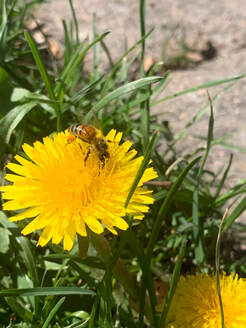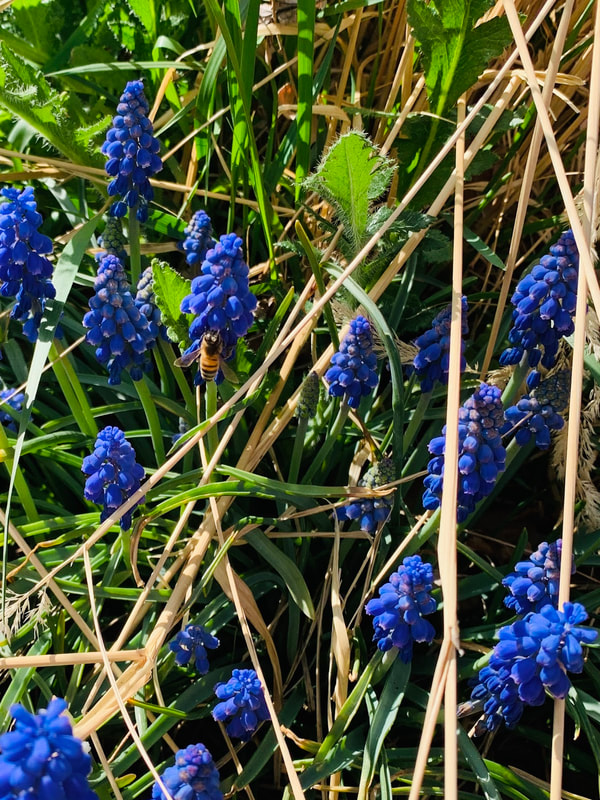|
Worker bees also collect nectar to create that delicious honey that we all love. When they collect nectar, they will use their tiny tongue and drink the nectar from the flower into their honey stomach. They will not return to the hive until that stomach is full. Once they are ready to return to the hive, they have to spit up the nectar and pack it with the remaining pollen into a single honeycomb. Now they sit and wait….and voilà …honey! For 1lb of honey, it will take 10,000 bees, traveling 75,000 miles to about 8,000,000 flowers – this is a team effort!Working as a team requires communication. Now, bees cannot talk to each other like humans, but they can dance or waggle! When a worker bee dances/waggles, they waggle in a figure-eight formation, indicating which direction to go for more food.
|
Pollinators, such as butterflies, birds, and bees, help grow 75% of the world’s food supply. Unfortunately, the destruction of native vegetation to make space for humans is threatening many pollinator populations, placing their long-term survival in jeopardy.
Thankfully, we can help keep bees buzzing by creating an attractive habitat for them in our own backyards. My team with Architectural Digest Reviews created a comprehensive guide detailing how to create a pollinator sanctuary, along with organizations that support pollinators.
How to Create a Pollinator Garden in 7 Steps:
https://www.
- https://thehoneybeeconservancy.org/plant-a-bee-garden/
- https://bees.techno-science.ca/english/bees/pollination/default.php
- https://animals.net/honey-bee/
- https://www.sciencemag.org/news/2017/11/honey-bees-fill-saddlebags-pollen-here-s-how-they-keep-them-gripped-tight
- https://beesneeds.colorado.edu/introtonativebees.html
- https://commons.wikimedia.org/wiki/File:Bee_waggle_dance.png





Thanks for sharing this article. It was informative. I am also writing a blog on places to travel around the world. Maybe you can check it out.